FORT DRUM, N.Y. (June 12, 2009) - Native Arabic speakers, roadside attacks, MEDEVAC (medical evacuation) helicopters and IEDs... in Watertown, NY.
Operation Courage Peak, a training exercise for the Soldiers of the 2nd Battalion, 22nd Infantry ("Triple Deuce") incorporated all of these things and more.
The exercise lasted for 10 days and the Soldiers dealt with scenarios they might encounter in Iraq. All of the scenarios took place in the fictional town of Tirika.
"We created these conditions to replicate the environment (they could face)," said Lt. Col. Michael Loos, the battalion commander.
In between exercises, Soldiers caught up on sleep, as several of the missions lasted late into the night and early morning. At 6:00 p.m. everyone came back to a designated meeting point for dinner and the company commanders met with the brigade commander and command sergeant major to discuss the day's events.
"We are focusing on their collective training, as a platoon," said Loos.
Loos compared the training of his Soldiers to the training of an athlete, saying the more training an athlete has, the better prepared he is for upcoming competitions.
"There is a collateral benefit, too, which is being able to work with the Iraqi role-players," said Loos. "It gives the Soldiers some cultural awareness and education."
During one of the scenarios, the Soldiers arrived in a convoy to discover several of the Iraqi townspeople had set up a road block and were protesting against the Soldiers driving into their town. The Soldiers got out of vehicles and approached the townspeople; the platoon leader, 2nd Lt. Joel Newburn, told the locals, through the use of an interpreter, the Soldiers were there to talk to the sheikh.
While Newburn and the interpreter spoke with the sheikh, explaining the situation, other Soldiers in the platoon made sure the townspeople stayed away from the vehicles and kept a distance from Newburn and the sheikh.
Things seemed to go smoothly and just as the meeting appeared to be winding down, shots came from the other side of the town, forcing the Soldiers to react quickly, moving the vehicles into a defensive position and start clearing the buildings.
In a second scenario, Soldiers faced an air assault. The town was known by the Soldiers to be unfriendly and as they came in, townspeople watched from the buildings. A mosque was in the center of the town and the afternoon call to prayer played through the loudspeaker.
During this exercise, a newspaper reporter was embedded with the Soldiers, another element the Soldiers may face in the Middle East. When asked by the reporter as to why the Soldiers came into the town, Capt. Daniel Gregory said they were given a mission to enhance the local security.
As 2nd Lt. Tyler Quillico, the platoon leader, was speaking to the sheikh, the platoon suddenly came under attack. The attack resulted in two immediate casualties and the Soldiers dealt with returning fire, keeping the sheikh, interpreter and reporter safe, and tend to the casualties.
Continuing to return fire, the Soldiers moved out after calling for a MEDEVAC and brought the injured Soldiers to a safer area. A landing zone for the MEDEVAC helicopter was set up and green smoke marked the area for the pilots to see.
In yet another scenario, a convoy left the Forward Operating Base (FOB), a secure area used for supporting tactical operations.
As they arrived in the designated town, a perimeter was set up and the Soldiers ensured that the townspeople again stayed away from the vehicles and back from any potential danger. A reporter was once again embedded with the Soldiers, although in this scenario, the reporter was from the Department of Defense.
As the platoon leader, 2nd Lt. Sam Holt approached the town with his Soldiers, an improvised explosive device (IED) was found. The Explosive Ordnance Disposal (EOD) team was called in to detonate the IED. After the safe removal, the Soldiers moved forward with the operation.
As the convoy headed out, gunfire came from insurgents hiding along the roadside. Gunners on top of the Humvees returned fire and again, the Soldiers reacted quickly to casualties, sending some of the Soldiers to set up a perimeter.
Loos said the thorough training had better value for the Soldiers and in the end, they would be better positioned for a future deployment.
"(Operation Courage Peak) went way beyond my expectations," said Loos. "It's exactly what we needed."
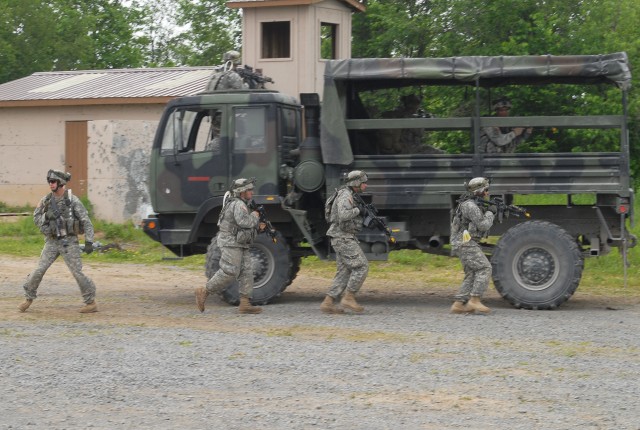

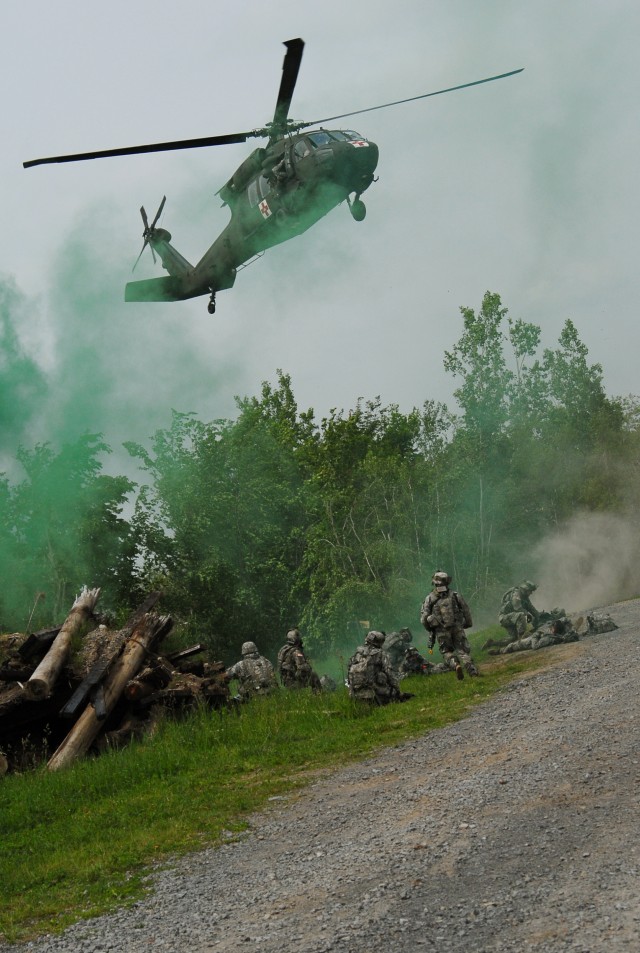
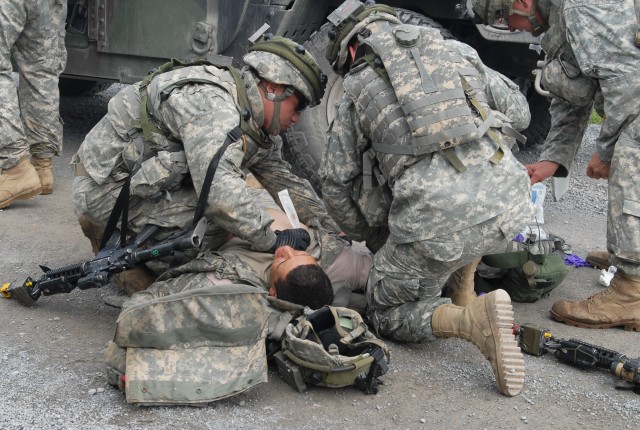
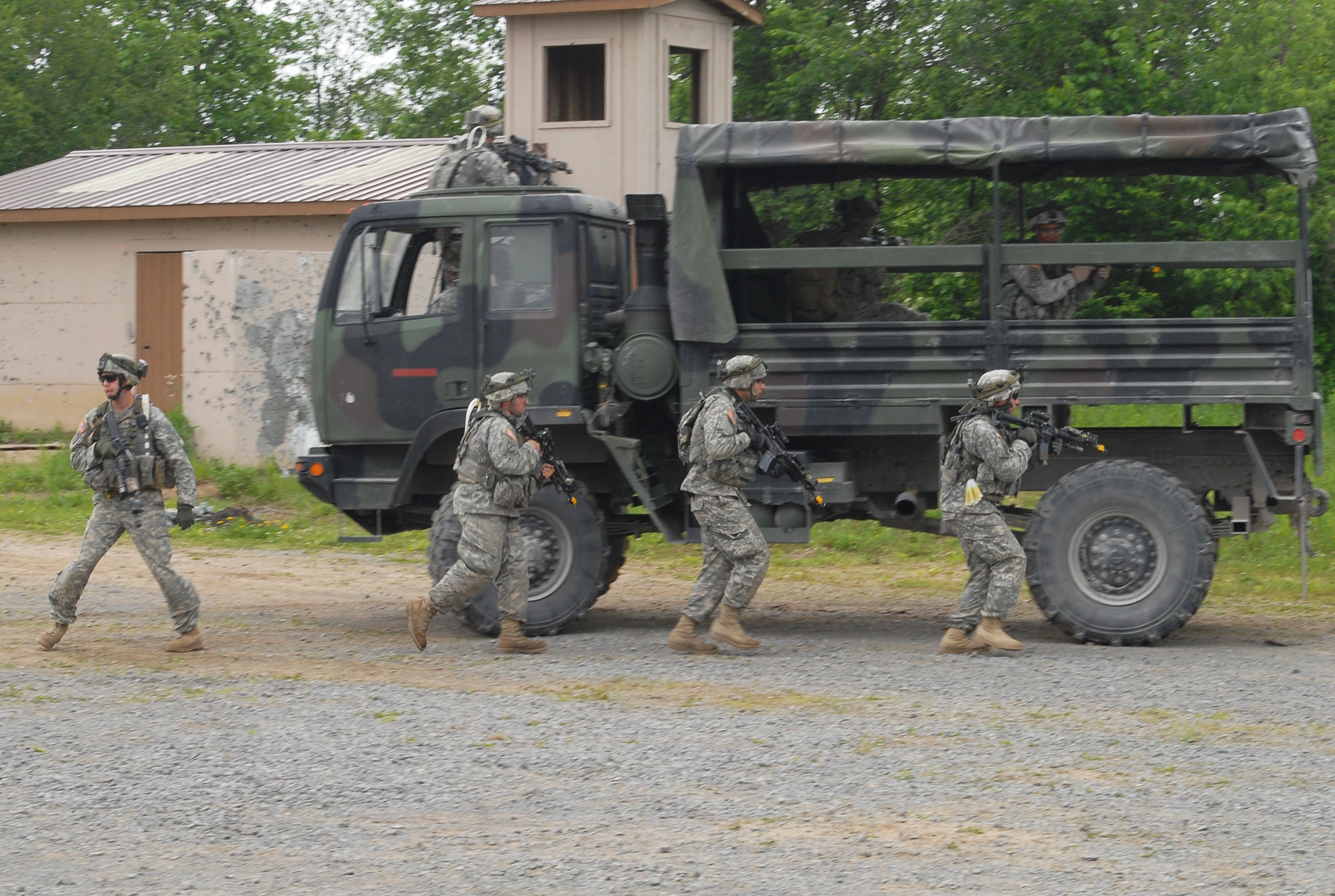

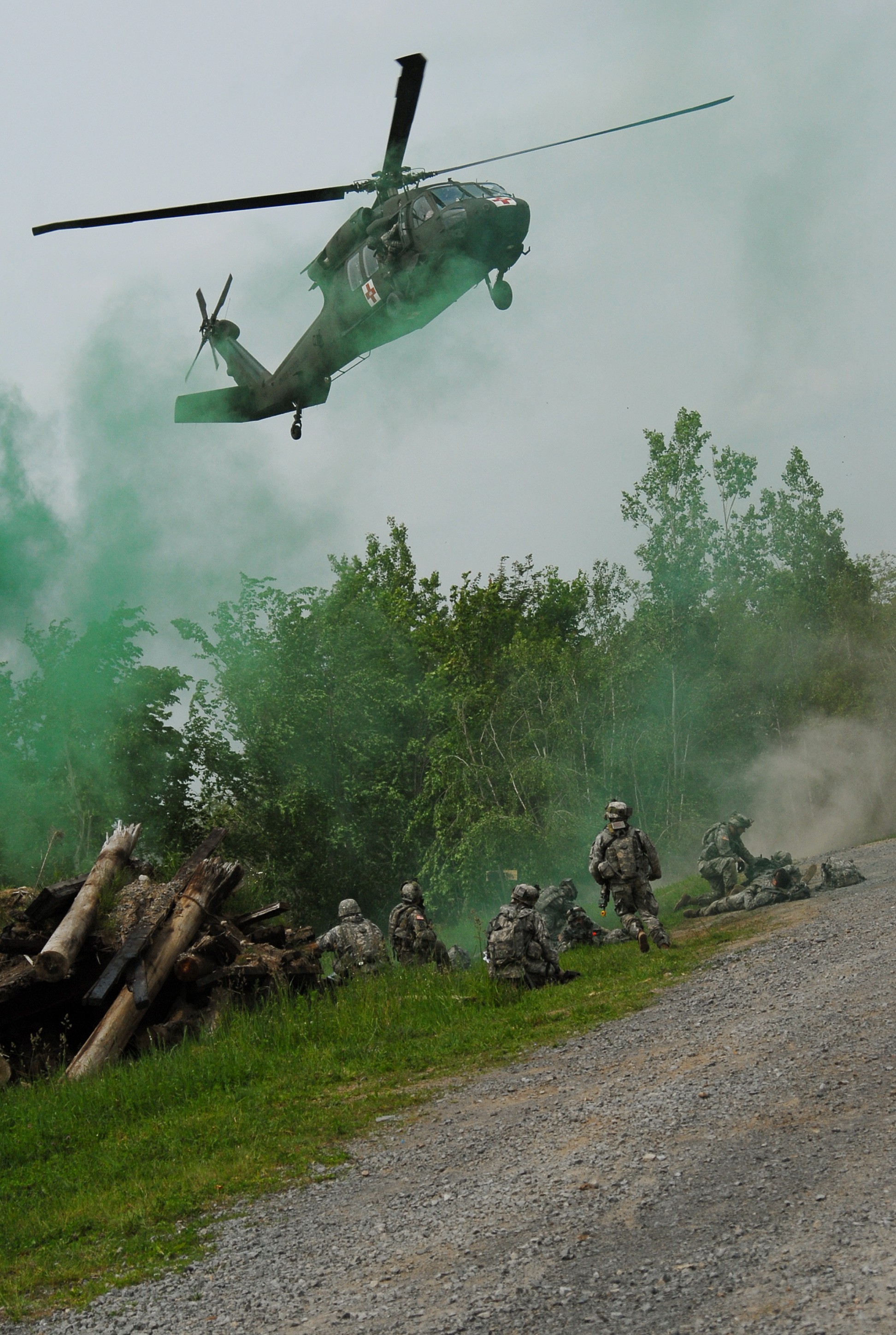
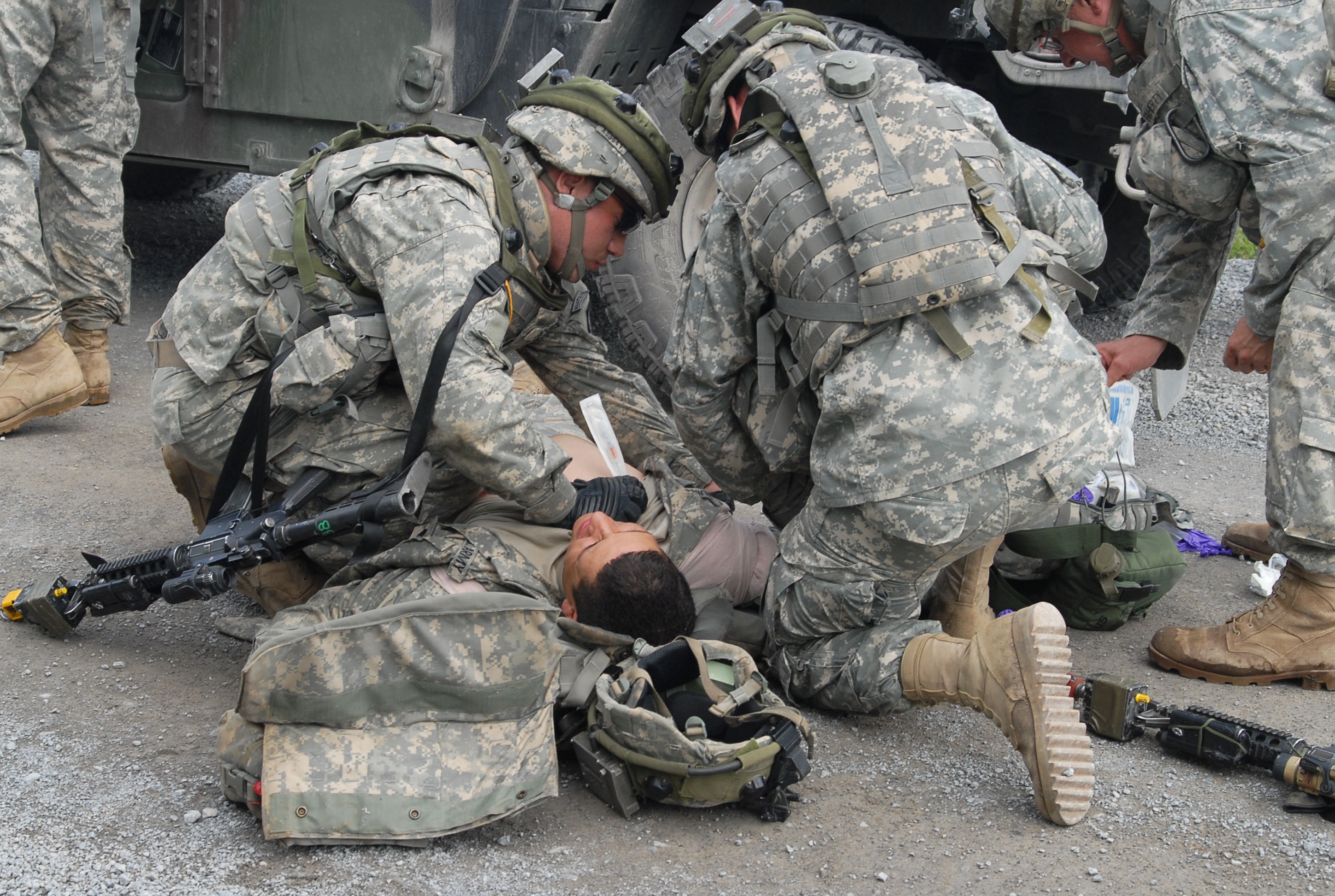
Social Sharing